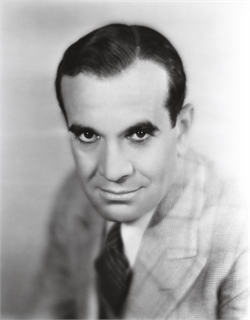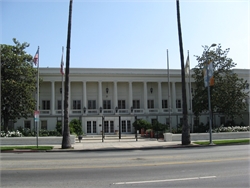No video provided.
You Ain’t Heard Nothin’ Yet !

With movies available on screens large and hand-held, it’s easy to take for granted how far film technology has come. Making its way to Southern California in the early 1900s, by 1912 most major film companies had set up production facilities around Los Angeles with much of the reasoning being the beautiful weather making filming possible any time of the year. Until the Warner Brothers—at the time considered a second-string studio—took a major leap in the industry by creating sound in feature films, all films had been silent with an accompanying orchestra in the theater for music. In 1926, Warner Bros. added a score and sound effects to the John Barrymore silent film, Don Juan. However, it was in 1927 that Warner Brothers took what they had learned from setting up a radio station, their experiment with Don Juan and a series of musical shorts, and created the first talking feature film, The Jazz Singer, making the site of the film on Sunset and Bronson a Hollywood legacy.

The Jazz Singer is a story about Jakie Rabinowitz, the son of a Jewish cantor who dreams of becoming a jazz singer and must defy his religious father to pursue those dreams. Directed by Alan Crosland and produced by Warner Bros with its Vitaphone sound-on-disc system, the film features six songs performed by Al Jolson and is based on a play of the same name by Samson Raphaelson. When Sam Warner, of the Warner Brothers, planned The Jazz Singer, he anticipated that the film would be a silent film and only use the Vitaphone technology for the music, as had been done with Don Juan. However, while filming, superstar Al Jolson ad-libbed dialogue in two scenes, and Sam decided to keep them in the film. Thus, the first feature-length film that included dialogue on film was born. While most the film is silent, with words written on title cards like most silent films, the fact that Al Jolson has spoken dialogue in the film made way for the future of “talkies,” as movies with audio sound were called.
The Warner Brothers, Harry, Albert, Sam, and Jack, had been making movies in their downtown L.A. studio at 18th and Main when they bought ten acres of land off Sunset and Bronson in Hollywood. In 1919, the studio grew from a 50’ x 100’ stage, nicknamed The Barn, to a collection of small stages and offices. Its main headquarters building was built in the late 1920s.
Besides The Jazz Singer, some of the biggest stars to emerge from the stages at Sunset and Bronson were John Barrymore, Rin Tin Tin, Bugs Bunny and other Looney Tunes characters. By 1937, Warner Bros. Studios had relocated to Burbank. The studio’s main building became a bowling alley and sports [?] until 1954 when the property was bought by Paramount Television Productions, changing hands again in 1958 when KTLA television studios took over the stages.

In 1977, Hollywood celebrated the 50th anniversary of The Jazz Singer with a parade of old cars moving down Sunset Boulevard, a 50th-anniversary commemorative stamp release and the City of L.A. declared the old Warner Brothers West Coast Studio Historic-Cultural Monument No. 180. In 2001, Tribune Entertainment company, then owner of the site, announced plans to overhaul the studio facility to transform it into the nation’s first fully digital studio, a far cry from the first talkie. It was renamed Sunset Bronson Studios and co-owned by the nearby Sunset Gower Studios and Columbia Pictures studio lot when Hudson Capital, LLC acquired the property.
While the site at 5800 Sunset Boulevard bears little resemblance to its early years, except for the restored neo-classical headquarters building, it will always be remembered as the site where the first talkie was born and as Al Jolson put it, “Wait a minute! Wait a minute! You ain’t heard nothin’ yet!” and as the industry continues to evolve, truer words were never spoken. DH